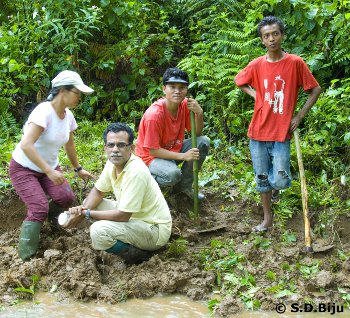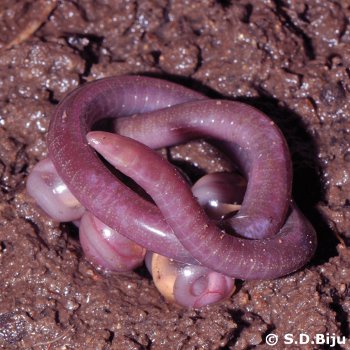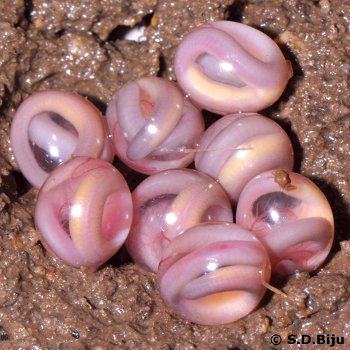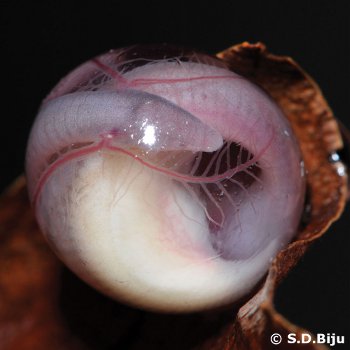North-east India is a poorly understood region only considered to be a ‘gateway’ between the Himalayan and Indo-Burmese biodiversity hotspots, but now researchers are calling for more attention after the recent discovery of a whole new family of amphibians in the area.

This result is the culmination of five years of hard labour: from 2006 to 2010 Dr Sathyabhama Das Biju of the University of Delhi, with colleagues from the Natural History Museum and Belgium’s Vrije University, spent over 1000 hours digging soil to find the elusive creatures. Superficially resembling snake-sized earthworms, their burrowing lifestyle makes them very difficult to find above ground, and are therefore the least known order of tetrapods.
They managed to survey 238 localities and found more than 500 caecilians, sometimes in places they had never previously been seen, such as Meghalaya, just north of Bangladesh, and Nagaland, next to Myanmar. DNA analyses of the specimens revealed that their closest relatives, the Herpelidae, from which they diverged around 140 million years ago, are actually in Africa. Three-dimensional x-ray images of their skulls also differentiate them from other families: they possess variations in eye and nose structure as well as an additional set of teeth in the lower jaw.
Dr Biju and his team christened them Chikilidae (“Chikila” being a local tribal name for caecilians), after finding six potentially new species across the survey sites, three that have been confirmed since. The news was published last week in Proceedings of the Royal Society B.

The discovery is helping to improve understanding of amphibian evolution: the splitting of the Chikilidae into different species in the one area combined with a slow rate of migration indicates that the habitat has been stable for millions of years.
The EDGE of existence project (which ranks species on scales of how evolutionarily distinct and globally endangered they are) relies on this type of historical research into relationships between species: the information is used to develop family trees that determine a comparative score for evolutionarily distinctiveness.
As more species are revealed, more work is crucial to find out where they fit in the tree of life, and these EDGE rankings can ultimately influence decisions on how to divide limited conservation resources. Meanwhile, India’s exponential population growth and increasing rate of deforestation is changing the environment too quickly for species to adapt, which may cause them to become victims of ‘nameless extinction’ before they are even discovered.
Current statistics show that about 80% of caecilian species are classified as Data Deficient (DD) on the IUCN Red List, meaning there is insufficient information at present to assign a threat category. One of the goals of the EDGE programme is to raise the profile of these poorly understood ‘naked snakes’ and support conservation initiatives for them, such as the Sagalla Caecilian Project and work with the caecilians of Cameroon.


More information:
https://www.edgeofexistence.org/amphibians/species_info.php?id=548